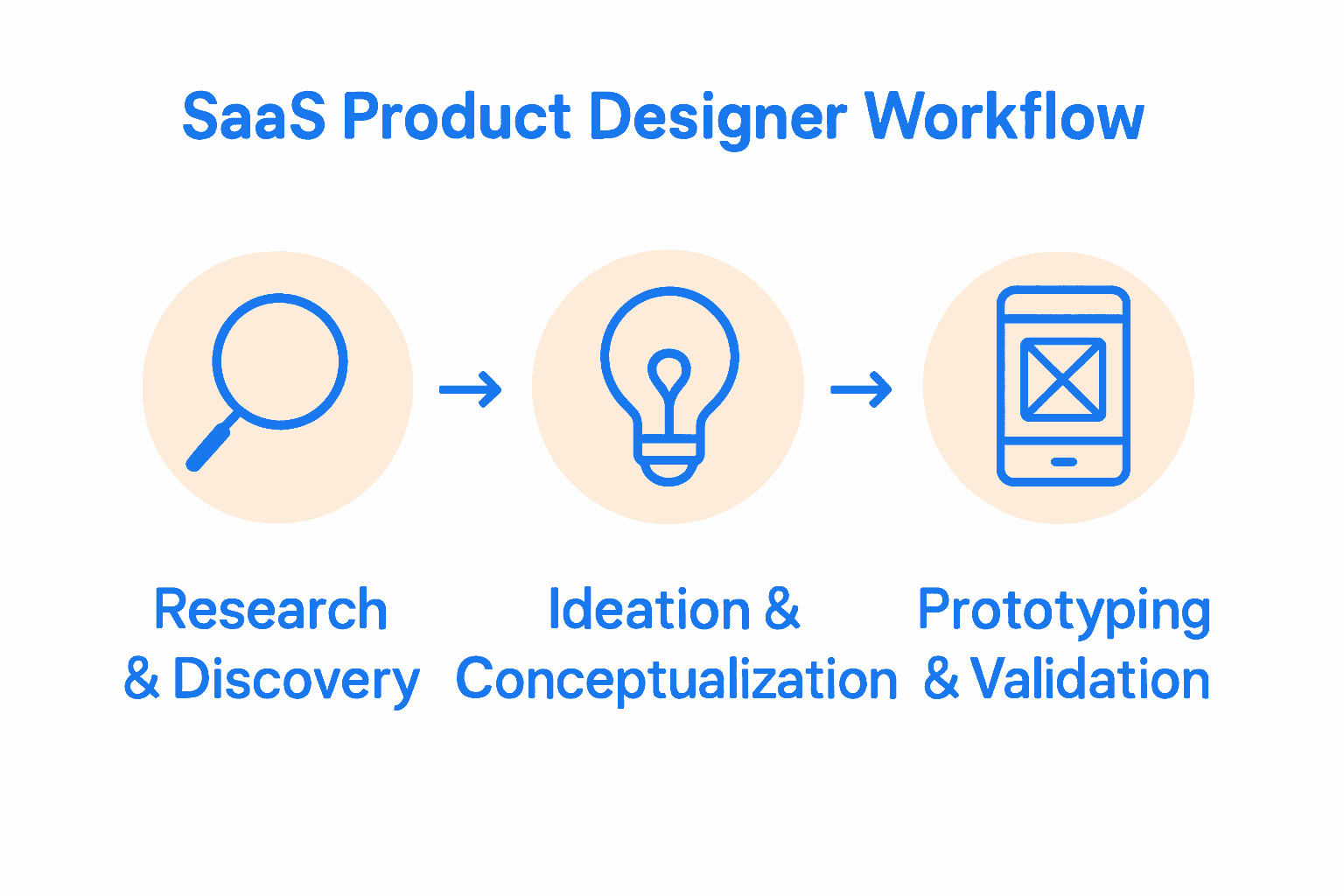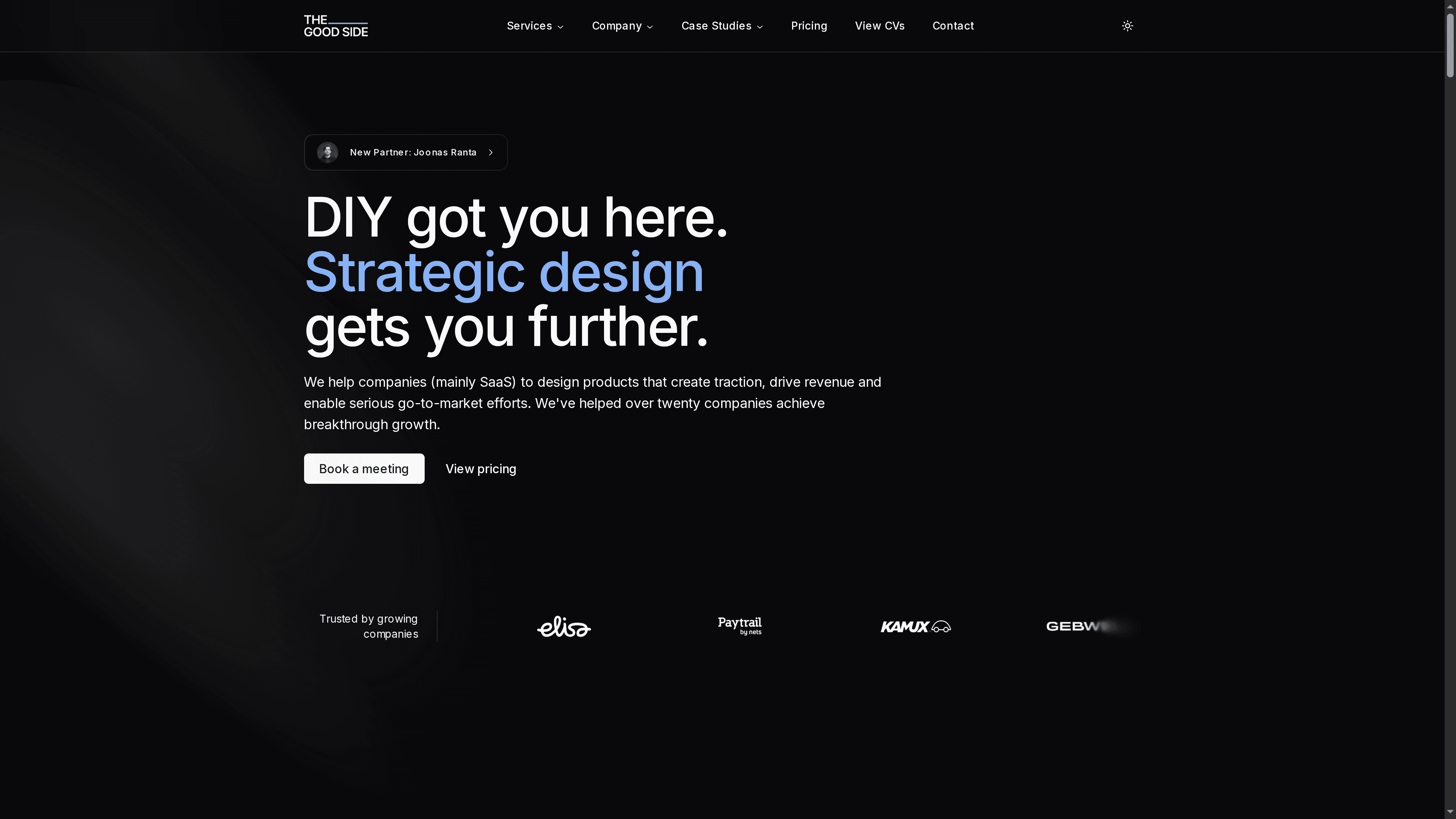Role of Product Designers: Complete Guide for SaaS
Role of product designers explained for SaaS: responsibilities, core skills, key processes, team integration, pitfalls, and measurable impact in one guide.

Most digital products never make it past their first year, often because they fail to meet real user needs. In a fast-evolving SaaS market, the demand for seamless, user-friendly interfaces is at an all-time high. Product designers stand at the crossroads of art, psychology, and business, shaping tools that not only look good but actually solve problems. Discover what sets these professionals apart and why their unique skill set drives both product success and user satisfaction.
Table of Contents
- Defining The Role Of Product Designers
- Types Of Product Designers In SaaS
- Core Responsibilities And Skill Sets
- Product Designer Workflow And Processes
- Integrating Product Designers With Teams
- Common Challenges And How To Avoid Them
Key Takeaways
| Point | Details |
|---|---|
| Role of Product Designers | Product designers are essential for transforming user insights and business objectives into effective digital solutions, emphasizing usability and aesthetics. |
| Types of Product Designers in SaaS | Different specialization areas such as UX, UI, and Interaction Designers cater to specific aspects of the design process to ensure holistic product experiences. |
| Core Responsibilities | Key tasks include user research, prototyping, and collaboration with teams, requiring a balance of technical and communication skills. |
| Challenges and Strategies | Common challenges include design misalignment and complexity; effective communication and modular frameworks are essential for addressing these issues. |
Defining the Role of Product Designers
Product designers are the strategic architects who transform complex business requirements and user insights into compelling digital experiences. Andacademy defines them as professionals responsible for researching user needs, establishing design requirements, and developing prototypes that simultaneously satisfy user expectations and organizational objectives.
Their role extends far beyond aesthetic design. Product designers function as critical problem solvers who bridge multiple disciplines including user experience (UX), user interface (UI), and business strategy. UX Visma highlights that they translate research findings, business goals, and user feedback into engaging product designs, collaborating closely with UX leads, researchers, and development teams.
Key responsibilities of product designers in SaaS environments include:
- Conducting comprehensive user research
- Creating intuitive and scalable interface designs
- Developing interactive prototypes
- Iterating designs based on user testing and feedback
- Aligning product experiences with overall business strategy
While traditional designers might focus solely on visual elements, modern product design for SaaS involves a holistic approach. Their work integrates psychological understanding of user behavior, technical feasibility, and strategic business thinking to create products that are not just visually appealing, but functionally exceptional and commercially viable.

Types of Product Designers in SaaS
Mind Inventory reveals that SaaS product designers specialize in distinct domains, each addressing unique aspects of digital product development. These specialized roles ensure comprehensive design coverage, addressing everything from user experience to visual aesthetics and interaction dynamics.
According to Andacademy, the primary types of product designers in SaaS include:
- UX Designers
- Focus on user research and usability
- Create user journey maps
- Conduct comprehensive user experience studies
- Develop personas and user personas
- UI Designers
- Concentrate on visual design elements
- Design interface layouts and graphic components
- Ensure aesthetic consistency across platforms
- Create responsive design frameworks
- Interaction Designers
- Design user interaction flows
- Create intuitive navigation systems
- Optimize user engagement pathways
- Develop interactive prototypes
These specialized designers collaborate closely within product design workflows to create holistic product experiences.
While their focus areas differ, their ultimate goal remains consistent: crafting digital products that are functional, engaging, and aligned with user needs and business objectives.
Core Responsibilities and Skill Sets
Andacademy outlines the core responsibilities of product designers as a comprehensive process of creating user-centric digital solutions. These professionals are tasked with conducting in-depth user research, establishing precise design requirements, and developing sophisticated prototypes that bridge user expectations with business objectives.
Technical Skills represent the foundation of a product designer’s toolkit. UX Visma emphasizes the importance of skills that enable effective ideation, prototyping, and design validation. These critical competencies include:
- Proficiency in design tools (Figma, Sketch, Adobe XD)
- Advanced prototyping capabilities
- User research and data analysis
- Understanding of interaction design principles
- Basic front-end development knowledge
- Design systems and component architecture
The multifaceted nature of product design requires a unique blend of soft and technical skills. Designers must seamlessly translate complex research findings into intuitive product experiences, requiring strong communication, empathy, and strategic thinking. Design Systems Guide highlights that successful product designers act as critical connectors between user needs, technological constraints, and business strategy—transforming abstract insights into tangible, user-friendly digital solutions that drive meaningful engagement and organizational growth.
Product Designer Workflow and Processes
Andacademy reveals that product design is a strategic, iterative process designed to transform user insights into functional digital solutions. The workflow encompasses comprehensive stages that ensure products not only meet user expectations but also align with critical business objectives.
According to UX Visma, the typical product design workflow involves multiple interconnected stages:
- Research and Discovery
- Conduct user interviews
- Analyze market trends
- Develop user personas
- Identify pain points and opportunities
- Ideation and Conceptualization
- Generate design concepts
- Create initial wireframes
- Brainstorm innovative solutions
- Sketch preliminary user journeys
- Prototyping and Validation
- Develop interactive prototypes
- Conduct user testing
- Gather qualitative and quantitative feedback
- Iterate design based on insights
The most effective product design workflows for high-performing SaaS teams emphasize continuous collaboration and rapid iteration. Designers must remain adaptable, transforming user feedback into tangible improvements while maintaining a holistic view of the product’s strategic goals and user experience.

Integrating Product Designers With Teams
UX Visma emphasizes that successful product design integration requires seamless collaboration across multiple teams and disciplines. Product designers serve as critical bridges, translating complex user insights and business objectives into cohesive design strategies that align diverse stakeholder perspectives.
According to Andacademy, effective team integration involves strategic communication and collaboration mechanisms:
Key Collaboration Channels
- Regular cross-functional design reviews
- Shared design system and component libraries
- Collaborative prototyping sessions
- Transparent feedback mechanisms
- Joint user research initiatives
Team Integration Strategies
- Establish clear communication protocols
- Create shared design and product vision
- Develop interdisciplinary understanding
- Foster psychological safety for innovative thinking
- Implement agile design methodologies
Understanding how design responsibilities can spread too thin and create design debt becomes crucial for maintaining high-quality product experiences. Product designers must balance collaborative engagement with focused expertise, ensuring that design integrity remains paramount while supporting collective team objectives.
Common Challenges and How to Avoid Them
Mind Inventory highlights that SaaS product designers face intricate challenges balancing product complexity with user-friendly interfaces. The persistent tension between creating comprehensive features and maintaining intuitive user experiences demands strategic, nuanced design approaches that prioritize user comprehension and engagement.
According to Andacademy, product designers encounter several critical challenges that require proactive management:
Key Design Challenges
- Misalignment between design goals and business objectives
- Inconsistent stakeholder expectations
- Scalability limitations
- Complex user interaction flows
- Rapidly changing technological landscapes
Strategic Mitigation Approaches
- Implement modular design systems
- Establish clear communication protocols
- Conduct frequent user research
- Create flexible design frameworks
- Develop iterative feedback mechanisms
Understanding potential design debt risks when responsibilities spread too thin becomes critical. Successful product designers must maintain a delicate balance between innovative design solutions, technical constraints, and user-centric thinking—transforming challenges into opportunities for creating exceptional digital experiences.
Unlock the Full Potential of Your SaaS Product with Expert Product Design
The article highlights how product designers face the challenge of balancing complex user needs with scalable and strategic solutions while avoiding design debt and misalignment. If you struggle with fragmented user journeys, unclear positioning, or inconsistent design across your SaaS product, these issues can slow down your growth and frustrate your users. Product design is not just about making things look good; it requires deep collaboration, user research, and a flexible workflow to create engaging and effective digital experiences.

Elevate your product design with The Good Side, where senior SaaS-specialized designers bring clarity and cohesion to your interfaces and user journeys. Starting with a free design audit, our process quickly matches you with expert talent who can seamlessly integrate and address your specific challenges. Whether you need part-time consulting or fully embedded designers, we deliver measurable improvements in activation, conversions, and revenue. Visit The Good Side now and take the first step toward turning your product into a high-performing, user-focused solution that drives sustainable growth.
Frequently Asked Questions
What is the main role of a product designer in SaaS?
Product designers in SaaS are responsible for transforming user insights and business requirements into engaging digital experiences. They conduct user research, create prototypes, and ensure the final product meets both user expectations and organizational goals.
What are the different types of product designers in SaaS?
The main types of product designers in SaaS include UX designers, who focus on user experience and research; UI designers, who concentrate on visual design elements; and interaction designers, who design user interaction flows and navigation systems.
What skills are essential for product designers working in SaaS?
Essential skills for product designers in SaaS include proficiency in design tools like Figma or Adobe XD, advanced prototyping capabilities, user research and data analysis skills, understanding of interaction design principles, and basic front-end development knowledge.
What is the typical workflow for product designers in SaaS?
The typical workflow for product designers in SaaS includes stages such as research and discovery, ideation and conceptualization, and prototyping and validation. This iterative process ensures that products align with user needs and business objectives while allowing for continuous improvement based on user feedback.
Recommended
- Role of Service Designers: Complete SaaS Guide
- Product Design Workflow for High-Performing SaaS Teams
- Role of Service Designers: Complete SaaS Guide | The Good Side Blog
- Best ui design tools for saas – Expert Comparison 2025
- 7 Types of Web Design You Need to Know - Marzipan
- Adobe Express: Designing Fun Add-Ons to Enhance It